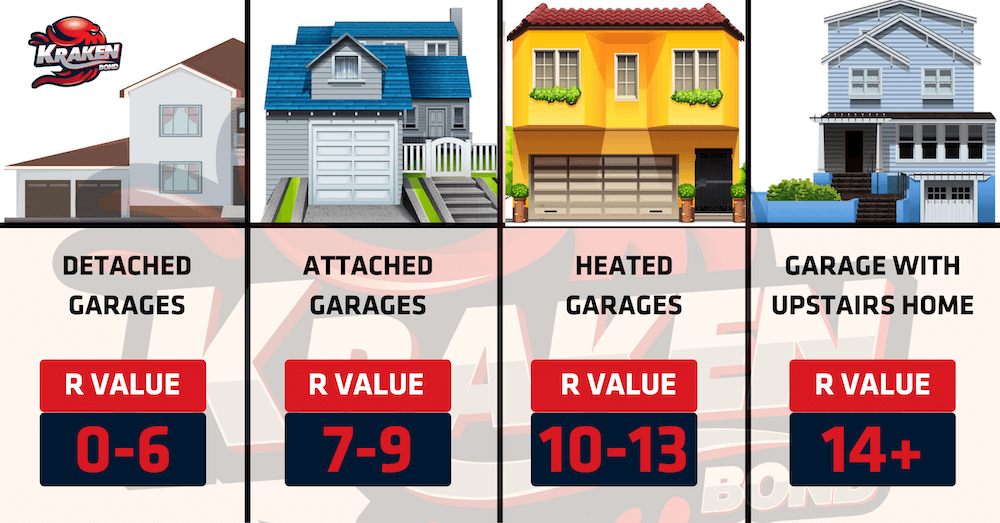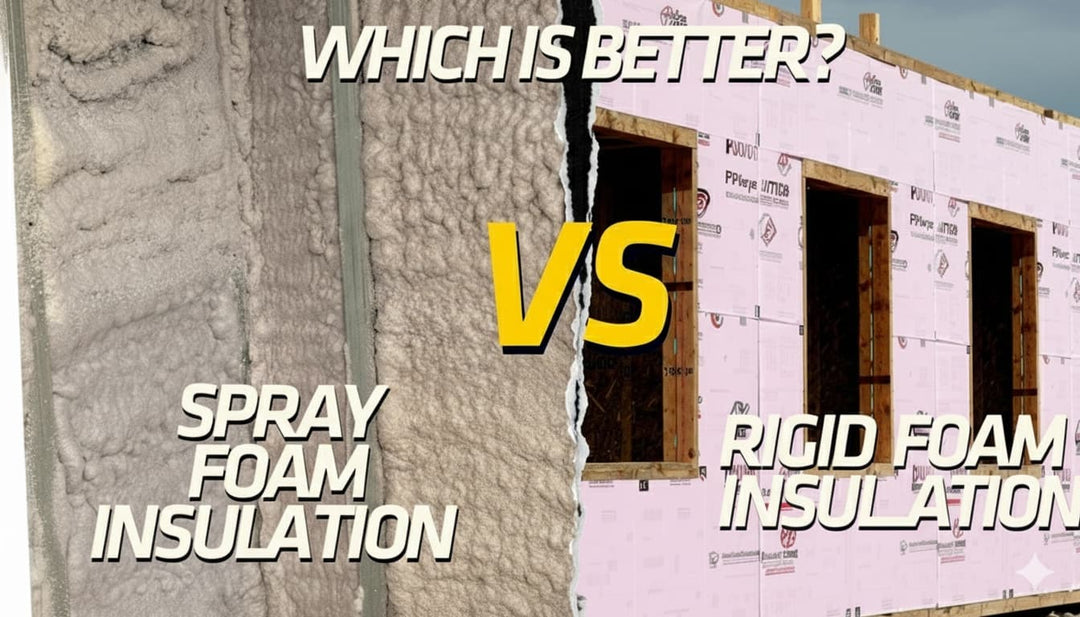Insulation Maintenance: How To Keep Your Insulation In Top Condition?
Creating an energy-efficient home is a major investment, and proper insulation maintenance is the best way to manage it. To get the best out of your spray foam insulation, you must cultivate a consistent maintenance culture. In this post, we will guide you on how to keep your insulation in top condition. We will also highlight common FAQs regarding insulation maintenance.

How to Keep Your Insulation in Top Condition?
Insulation maintenance is crucial for ensuring maximum comfort, achieving up to 30% noise reduction, and preventing moisture problems in buildings. Regular maintenance, ideally every 3-5 years, is vital for any building component to ensure its longevity and effectiveness. Insulation, if properly maintained, can last for over 40 years, significantly reducing energy costs by as much as 20%. Here are 5 essential strategies to ensure your insulation remains in top condition, guaranteeing optimal performance and cost-efficiency:

1. Regular Inspections
Regular inspections of insulation are the occasional examinations for damage or deterioration. Regular inspections help you notice damages such as holes, tears, and leaks quickly. At a minimum, inspections should be done once a year. Here are 4 ways to inspect your spray foam insulation regularly.
- Visible Examination : Regularly conduct visual checks for deterioration. Look for visible signs of damage, such as cracks that are more than 2mm wide, gaps wider than 5mm, and holes or leaks.
- Check for Discoloration : ssess the insulation for any signs of discoloration. Spray foam insulation typically begins to show discoloration, indicating mold or mildew growth, if moisture levels exceed 60% relative humidity.
- Pest Damage : Be vigilant for pest infestation, as it can reduce the effectiveness of the insulation by up to 30%. Look out for signs of pests or rodents chewing through the insulation, which can be identified by droppings or gnaw marks.
- Moisture Damage : Regularly inspect for visible signs of water leaks on your insulation. Moisture can destroy spray foam insulation and cause complications such as a 20-40% reduction in R-value (thermal resistance), which is crucial for insulation effectiveness.

2. Addressing Issues
Quickly responding to insulation issues is another way to ensure your insulation stays in good shape. Minor damages, extensive damages, and moisture control are some insulation issues that must be addressed immediately. Here are 4 ways to quickly respond to insulation issues:
- Minor Damage : Minor damages in insulation, such as cracks up to 3mm wide or holes smaller than 2cm in diameter, should be addressed immediately to prevent escalation. Use caulk and sealants, which can cover gaps of up to 1-2 inches effectively, to repair these small imperfections as soon as they are noticed.
- Extensive Damage : Neglecting minor damages can lead to extensive damage, causing the spray foam to lose up to 50% of its effectiveness. In cases of extensive damage, reapplying the spray foam may be necessary, or you might need to invest in professional repairs, which can cost between $300 to $500 for a standard-sized wall.
- Moisture Control : Moisture can reduce the efficiency of spray foam by 30-40% and foster mold growth. To control moisture, address water leak sources promptly in areas like attics or walls. Implementing proper ventilation can reduce moisture buildup by 60%, enhancing the insulation's efficacy.
- Accumulation of Dirt and Debris : Regular cleaning of the insulation surface, recommended every 6-12 months, helps remove dirt and debris. This prevents the creation of a breeding ground for mold and can improve indoor air quality by up to 25%.

3. Preventive Maintenance
Preventive maintenance is vital to preserve the effectiveness of your insulation, potentially saving you up to 50% in costs that would otherwise go towards extensive repairs. Here are some essential preventive maintenance methods for spray foam insulation, augmented with numerical values:
- Attics : Regularly check attics for water leaks, ensuring there are no gaps or holes larger than 2mm. Proper ventilation in attics is crucial to prevent moisture buildup, which can reduce insulation effectiveness by up to 30%.
- Rodent control : Rodents, if unchecked, can nest in or chew through spray foam, causing damage that reduces its efficiency by up to 25%. Implementing rodent control measures is essential. Seal potential entry points, which can be as small as a dime (about 18mm in diameter), and apply pesticides to deter infestation.
- Outdoor Exposure : UV exposure can deteriorate spray foam insulation by up to 40% over time. To prevent this, ensure that spray foam is either painted or covered, which can extend its lifespan by protecting it from direct UV exposure. A UV-resistant coating or cover should be applied every 5-10 years to maintain its protective properties.
4. Professional Help
Hire a professional if you are still determining the condition of your spray foam insulation. Professional insulators can assess the extent of damage, determine the cause, and provide expert solutions. Professional insulators also provide expert advice on insulation maintenance.
5. Additional Tips
Several additional tips help you keep your insulation in top condition. Here are the top 4 additional tips for insulation maintenance:
- Upgrade Outdated Insulation : Remove and replace outdated insulation immediately. Spray foam insulation is highly durable and can last for decades. Nevertheless, they can be inefficient when they are not properly installed. Here is a guide on how to remove spray foam insulation.
- Seal Air Leaks : Seal air leaks immediately using sealants. Air leaks reduce the effectiveness of spray foam by causing air infiltration. They also reduce the quality of air indoors.
- Choose the Right Type of Spray Foam : Spray foam is divided into 2 different types; closed-cell and open-cell spray foam. They both offer excellent thermal insulating properties. The right type of spray foam for your building is dependent on your choice, location, and budget. This article on Closed Cell Vs Open Cell Spray Foam will guide you on how to choose the right type of insulation.
- Sustainable Choices : The quality of your insulation is also dependent on the type of product used. Use eco-friendly products like FastCoat Insulation Spray foam. FastCoat Spray Foam is a carbon-neutral product with an R-value of R5.6 and excellent adhesion properties.
Conclusion
In a nutshell, keeping your home or building comfortable and energy-efficient requires regular insulation maintenance. Regular insulation maintenance helps to maintain energy efficiency, indoor temperature, and indoor air quality. Furthermore, regular maintenance and prompt repairs increase the efficiency and lifespan of insulation.
The best way to keep your insulation in top condition is by regular inspections, carrying out preventive measures, and addressing issues promptly. Consult with a professional insulation contractor for specific questions or concerns about your insulation.
As a homeowner or building manager, it is important to inspect and carry out maintenance of insulation at least once a year. Insulation maintenance should be done more frequently than once a year if you notice any signs of damage or deterioration.
FAQs
Can I Replace My Insulation Myself?
Yes, you can replace spray foam insulation as a DIY project. However, replacing insulation as a DIY is less expensive than hiring a professional.
How Often Should You Check Your Insulation?
Spray foam insulation should be inspected at least once a year. Regular inspections are essential to notice minor damages such as small cracks or water leaks.
Do I Need Professional Inspections If My Insulation Looks Fine?
Yes, you can hire a professional to inspect your insulation, even if it looks fine. Professional insulation contractors thoroughly assess your insulation and give expert advice on how to keep it in perfect condition.
What Government Incentives Are Available For Insulation Upgrades?
Governments provide incentives for energy-efficient buildings. For instance, the US government provides tax credits of up to $ 3,200 annually for home improvements or insulation upgrades.Author : Krakenbond Team
















Leave a comment